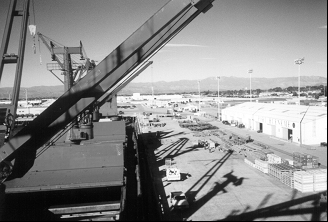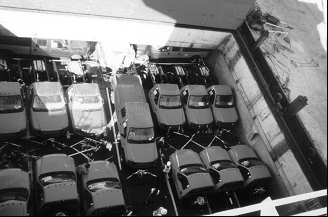
|
VOL 12 NO 2 |
Summer 2001 |
|
|
INSIDE:
Message from President Page 2 Mid-Atlantic Mini-Reunion Page 3 Region-9 Mini-Reunion Page 6 Trip to Antarctica Page 8 Jassam Page 10 Rescue in Rosario Page 11 MARU Page 12 Poetry Page 12 Maritime Nations & Ports Page 13 Vacation Travel Page 14 Letters Page 15 Roster Corrections Page 20 Registration Form Page 21 Silent Keys Page 23
TIME IS SHORTREGISTER NOW for the ATLANTA REUNION see cover story for details |
ATLANTA AWAITS GIRA
Airborne and surface Sparks will be Atlanta bound for the 2001 GIRA reunion on August 9 - 11at Gwinnett Palace Hotel, 1775 Pleasant Hill Road, Duluth, Georgia 30136. Make reservations by calling 1-800-228-9290 or speak directly with the Hotel at (770) 923-1775. Unfortunately Golden Cross is on restricted duty following recent major surgery, and we lost VP Raymond King, his designated backup. Therefore members planning to attend who haven’t already done so, should promptly complete the Registration form printed elsewhere in this publication and also in the Winter Spark Gap and forward to GIRA Secretary/Treasurer Homer N. Gibson at: P. O. Box 1235, Hermitage, PA 16148. Homer’s phone is: (724) 962-4213. Atlanta is the 11th largest metropolitan area in the United States, and its Hartsfield Airport is now the world’s busiest. For those renting a car at the airport, take Interstate 85 north for 27 miles to exit 40, which is Pleasant Hill Road. The Hotel is only a quarter mile down the exit road on the right. To take the bus, follow the signs from the airport baggage claim area to Ground Transportation and board AAA Airport Express #7 to Duluth-Gwinnett Place. Founded in 1837 and originally called Terminus (where its three railroad lines met) it was renamed Atlanta in 1845 and became the state capital in 1877. The Colony itself (later to become a state) was named Georgia by James Oglethorpe in 1732. Orglethorpe had to settle for a mountain to be named in his honor. Atlanta is now the home of many bureaus and organizations including CNN and CDC (Center for Disease Control and Prevention). The internationally popular Coca Cola soft drink was developed in Atlanta in 1886 and now serves as the world-wide company headquarters. Consider visiting Stone Mountain (one of the GIRA tours), a 1,686-foot monolith that dwarfs Australia’s famous Ayer’s Rock (1143 feet). Featuring the Battle of Atlanta, the Cyclorama is also a prime attraction with a three-dimensional effect. One of the many real-life size figures is a smiling Clark Gable. Atlanta Underground and myriad other attractions beckon. But perhaps the best of all is visiting and exchanging anecdotes and adventure stories with other Gallups Alumni. The Saturday night banquet will feature a delightful band playing not only WWII period tunes but also all-time popular favorites. And, of course, there will be a choice of classical and/or southern cuisine. |
|




























